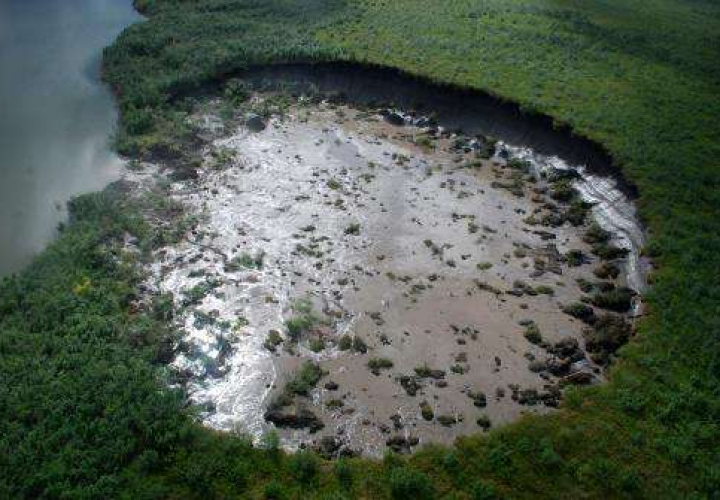
Advancing a Transparent and Robust Ecosystem for Carbon Credits
Climate change requires net-zero greenhouse gas (GHG) emissions by 2050. One tool to achieve this is the carbon credit market, where a carbon credit represents one tonne of carbon dioxide equivalent (CO2e) reduced or removed by a project or activity.
Carbon credits can be traded in voluntary or compliance markets. The voluntary carbon market has grown significantly, reaching $2 billion in 2021, and is expected to reach between $10 billion and $40 billion by 2030. The demand is driven by companies, individuals, and organizations that pledge to achieve net-zero emissions or offset their carbon footprint. The supply is generated by projects that avoid or reduce emissions from various sectors, or that remove emissions through nature-based or technology-based solutions.
However, the voluntary carbon market faces challenges that limit its credibility and impact, such as:
- Standards and transparency are lacking in the valuation, trading, and monitoring of carbon credits
- Lack of robustness and environmental integrity in the verification and certification of carbon credits.
- Inadequate alignment and coordination among the stakeholders involved in the voluntary carbon market.
To address these challenges and enhance the quality and effectiveness of the voluntary carbon market, there is a need to advance a transparent and robust ecosystem for the valuation, trading, and monitoring of carbon credits. This article provides an overview of some initiatives and innovations that aim to achieve this goal.
Valuation
Valuation involves determining the price and quality of carbon credits based on various factors such as supply and demand dynamics, project type, location, co-benefits, methodology, standard, verification, and certification. However, valuation is often opaque, inconsistent, and subjective, resulting in a wide range of prices and qualities for similar types of carbon credits.
To improve transparency and standardization in valuation, some initiatives are:
- The Taskforce on Scaling Voluntary Carbon Markets (TSVCM), developed a blueprint for scaling up the voluntary carbon market, including core carbon principles (CCPs) that define minimum quality criteria for carbon credits, and a reference contract that standardizes key contractual terms for trading carbon credits.
- The Science-Based Targets initiative (SBTi), developed a framework for companies to set science-based net-zero targets that are aligned with the 1.5 °C pathway and the mitigation hierarchy2. The framework requires companies to reduce their value chain emissions in line with science, neutralize any residual emissions with carbon dioxide removals (CDRs), and invest in beyond value chain mitigation actions, such as purchasing high-quality carbon credits.
- The Voluntary Carbon Markets Integrity Initiative (VCMI), seeks to ensure that carbon credits used in voluntary markets are of high quality and integrity and support the goals of the Paris Agreement. The VCMI developed principles and guidance for buyers and sellers of carbon credits.
Trading
Trading involves matching buyers and sellers of carbon credits, facilitating transactions, and ensuring delivery and ownership transfer. However, trading is often fragmented, inefficient, and costly, resulting in a lack of liquidity, accessibility, and scalability.
To improve transparency and efficiency in trading, some innovations are:
- The Global Carbon Exchange (GCX), a digital platform that uses blockchain technology to create digital tokens that represent carbon credits, and enable smart contracts that automate transactions and verification.
- The Carbon Credit Token (CCT), a project that aims to create a standardized and interoperable token for carbon credits, based on the Ethereum blockchain. The CCT token complies with the CCPs defined by the TSVCM, and integrates with existing carbon standards, registries, and verifiers.
Monitoring
Monitoring involves tracking the performance and impact of emission reduction or removal projects, verifying the issuance and retirement of carbon credits, and reporting the outcomes and benefits to stakeholders. However, monitoring is often manual, time-consuming, and unreliable, resulting in a lack of trust, accountability, and impact assessment.
To improve robustness and environmental integrity in monitoring, some innovations are:
- The Planetary Computer, a project by Microsoft that provides a platform for environmental data analysis and decision-making. The Planetary Computer combines cloud computing, artificial intelligence, satellite imagery, and geospatial data to enable users to access, analyze, and visualize environmental information at scale.
- The Climate TRACE Coalition, a group of organizations that uses remote sensing, machine learning, and data fusion to track GHG emissions from all major sources globally. The Climate TRACE Coalition provides independent, accurate, and near-real-time data on GHG emissions from various sectors.
Conclusion
The voluntary carbon market can play a vital role in accelerating the global transition to a net-zero economy and supporting climate action projects that deliver environmental, social, and economic benefits. However, to realize this potential, the voluntary carbon market needs to overcome challenges that undermine its credibility, impact, and scalability.
Advancing a transparent and robust ecosystem for the valuation, trading, and monitoring of carbon credits is essential for enhancing the quality, integrity, and effectiveness of the voluntary carbon market. This article has provided an overview of some initiatives and innovations that aim to achieve this goal.
References
- Taskforce on Scaling Voluntary Carbon Markets. Final Report [Internet]. 2021 Jan [cited 2023 Apr 21]. Available from: Link
- Science-Based Targets initiative. Net-zero [Internet]. [cited 2023 Apr 21]. Available from: Link
- Voluntary Carbon Markets Integrity Initiative. VCMI Principles and Guidance [Internet]. 2021 Sep [cited 2023 Apr 21]. Available from: Link
- Global Carbon Exchange. GCX: The Future of Carbon Trading [Internet]. [cited 2023 Apr 21]. Available from: Link
- Carbon Credit Token. CCT: A Standardized Token for Carbon Credits [Internet]. [cited 2023 Apr 21]. Available from: Link
- Microsoft. Planetary Computer: A Platform for Planetary-Scale Environmental Data Analysis and Decision Making [Internet]. [cited 2023 Apr 21]. Available from: Link
- Climate TRACE Coalition. Climate TRACE: Tracking Real-Time Atmospheric Carbon Emissions [Internet]. [cited 2023 Apr 21]. Available from: Link




